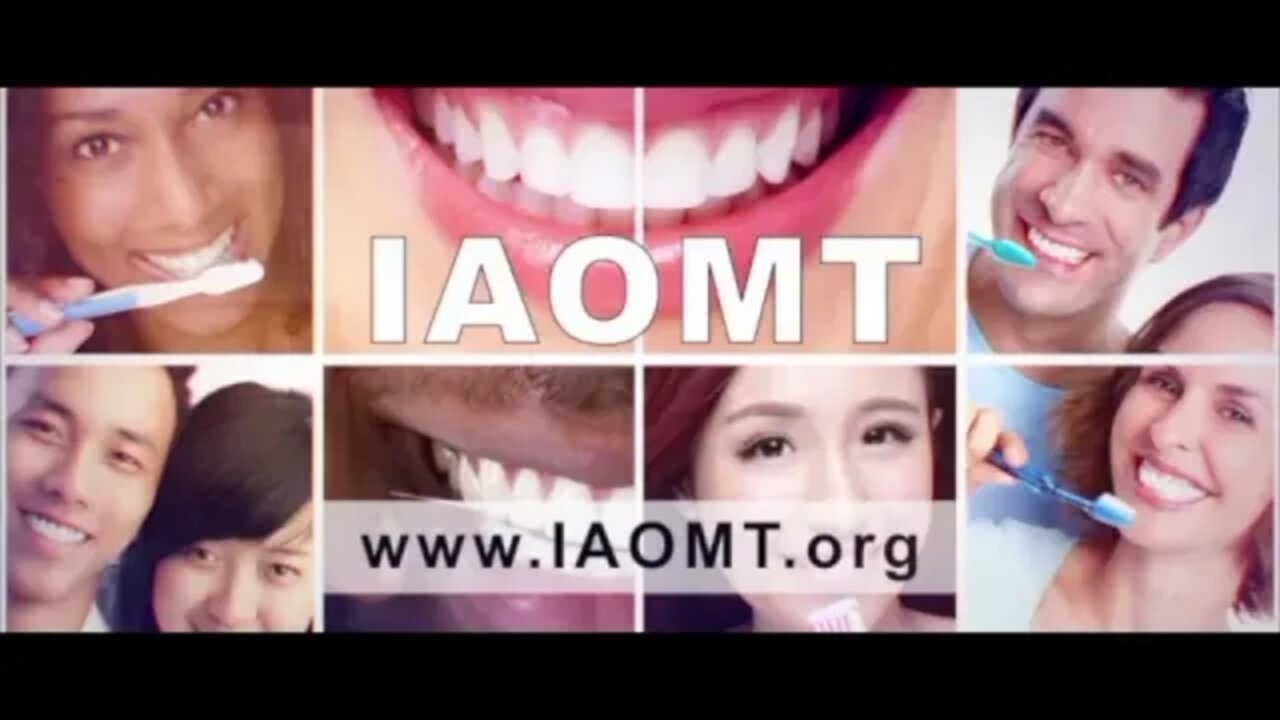Premium Only Content

Neurological Aspects of Dentistry and Its Relationship to Movement Disorders | Anthony B. Sims, DDS
The Neurological Aspects of Dentistry and Its Relationship to Movement Disorders | Anthony B. Sims, DDS
IAOMT Annual Conference in Stowe, VT
September 7, 2018
Learning Objectives:
1. Identify what is the TMJ. Everything is connected!
2. Identify what constitutes TMJ Disorder (TMJD). Identify what are the possible causes of
TMJD.
3. Identify what symptoms are related to TMJD.
Dr. Anthony B. Sims received his DDS degree from Ohio State University in 1983. He has had a general practice for over 30 years and is currently in Columbia, Maryland, where he also treats TMD and snoring/sleep apnea patients. He is a member of the American Academy of Craniofacial Pain, National Spasmodic Torticollis Assoc., Reflex Sympathetic Dystrophy Syndrome Assoc., and The International Association for Orthodontics. He has spoken worldwide on the perspective dentistry has on the possible abeyance of certain movement disorders such as Tourette’s syndrome and has had treatment results published in peer-reviewed journals.
Disclaimer: The information provided on this video is not intended as medical advice and should not be interpreted as such. If you seek medical advice, please consult with a health care professional. Also, the information in this video represents the thoughts of the individual speaker/s, and the views expressed in this interview do not necessarily reflect the views of the IAOMT, its individual members, its Executive Committee, its Scientific Advisory Council, its administration, its employees, contractors, sponsors, or any other IAOMT affiliates.
-
 45:13
45:13
International Academy of Oral Medicine & Toxicology
1 year agoDavid Kennedy, DDS, Breakout Session
381 -
 1:54:08
1:54:08
INFILTRATION85
7 hours agoHi, I'm INFILTRATION
34.2K9 -
 7:51:03
7:51:03
GuardianRUBY
9 hours agoRumble Takeover! The Rumblings are strong
72.3K3 -
 4:28:45
4:28:45
Etheraeon
16 hours agoWorld of Warcraft: Classic | Fresh Level 1 Druid | 500 Follower Goal
51.1K -
 3:17:21
3:17:21
VapinGamers
8 hours ago $3.73 earned🎮🔥Scrollin’ and Trollin’: ESO Adventures Unleashed!
34.9K2 -
 LIVE
LIVE
a12cat34dog
10 hours agoGETTING AFTERMATH COMPLETED :: Call of Duty: Black Ops 6 :: ZOMBIES CAMO GRIND w/Bubba {18+}
296 watching -
 8:23:18
8:23:18
NubesALot
12 hours ago $5.29 earnedDark Souls Remastered and party games
30.3K -
 3:03:42
3:03:42
GamersErr0r
1 day ago $2.20 earnedits not what you think
24.7K1 -
 7:15:50
7:15:50
Phyxicx
10 hours agoRocket League with Friends! - 11/22/2024
18.7K1 -
 7:54:29
7:54:29
STARM1X16
10 hours agoFriday Night Fortnite
15.5K